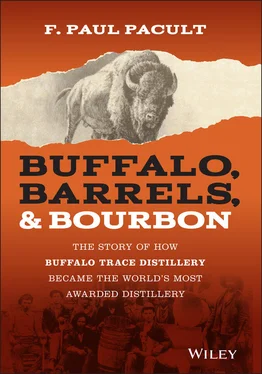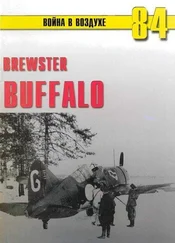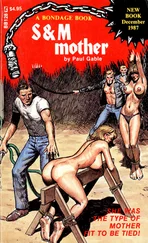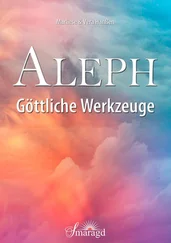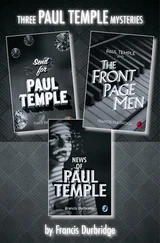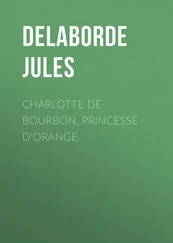F. Paul Pacult - Buffalo, Barrels, & Bourbon
Здесь есть возможность читать онлайн «F. Paul Pacult - Buffalo, Barrels, & Bourbon» — ознакомительный отрывок электронной книги совершенно бесплатно, а после прочтения отрывка купить полную версию. В некоторых случаях можно слушать аудио, скачать через торрент в формате fb2 и присутствует краткое содержание. Жанр: unrecognised, на английском языке. Описание произведения, (предисловие) а так же отзывы посетителей доступны на портале библиотеки ЛибКат.
- Название:Buffalo, Barrels, & Bourbon
- Автор:
- Жанр:
- Год:неизвестен
- ISBN:нет данных
- Рейтинг книги:3 / 5. Голосов: 1
-
Избранное:Добавить в избранное
- Отзывы:
-
Ваша оценка:
- 60
- 1
- 2
- 3
- 4
- 5
Buffalo, Barrels, & Bourbon: краткое содержание, описание и аннотация
Предлагаем к чтению аннотацию, описание, краткое содержание или предисловие (зависит от того, что написал сам автор книги «Buffalo, Barrels, & Bourbon»). Если вы не нашли необходимую информацию о книге — напишите в комментариях, мы постараемся отыскать её.
is a compelling must-read.
Buffalo, Barrels, & Bourbon — читать онлайн ознакомительный отрывок
Ниже представлен текст книги, разбитый по страницам. Система сохранения места последней прочитанной страницы, позволяет с удобством читать онлайн бесплатно книгу «Buffalo, Barrels, & Bourbon», без необходимости каждый раз заново искать на чём Вы остановились. Поставьте закладку, и сможете в любой момент перейти на страницу, на которой закончили чтение.
Интервал:
Закладка:
Consequently, reading after looking through the Glossary, which I suggest, you will find that the initial chapters have little to do with the bubbling of fermenting grain mash or the boiling of the mash's low-strength beer into high-alcohol distillate. The opening pages of Buffalo, Barrels, & Bourbon , nearly a fifth of the narrative, instead deals with the stark realities endured by the robust seventeenth-, eighteenth-, and early nineteenth-century Euro-American individuals who survived and persevered in the harsh, but green and lush North American environment. In this case, the focus lies on the uncharted, heavily forested area described first in maps as Kentucke . While beguiling to the eye and imagination, the deceptively feral soul of Kentucke forced hundreds of the earliest explorers, surveyors, military scouts, trappers, and fur traders to their knees in bruised submission. At least, it did for those fortunate ones who lived long enough to talk or write about it in journals.
The land itself where the Buffalo Trace Distillery campus stands today is a listed member of the National Register of Historic Places (#2428), one of a mere 2,600 such sites in the United States. This location in north-central Kentucky is the beneficiary of a geological and topographical majesty that must have been breathtaking to the first Euro-Americans who hacked their way through the midnight-dark primeval forests and paddled their pirogues down the swirling currents of the Kentucky River. It is here where the layers of sedentary substrata, the karst shelf geology, the trough-like sandy bank, pure spring water, the fertile, arable land for the growing of corn, and the strategic proximity to a major waterway, the Ohio River, all merge to create an ideal situation in which to make whiskey. Over time, the spilt blood of the pioneers, the heinous trials endured by the Native American tribes, and the near extinction of the dominant beast of the Great Plains, the buffalo, converged to create this saga about the taming of this virgin region and, later, about the distilling of legendary American whiskey.
After the low-bank location was settled with the building of crude riverside log structures, the storyline changes into a narrative that centers upon the multiple generations of influential clans, such as the Lees, Swigerts, Taylors, Staggs, Blantons, and Van Winkles. Painted with the main characters' foibles, peccadilloes, aspirations, failures, ingenuity, courage, and triumphs, Buffalo, Barrels, & Bourbon then warps into the chapters that uncover the evolution of some of America's most beloved whiskeys, the bourbons and ryes of Buffalo Trace.
The research and writing of this book took me back to places in time and space that I'd not visited to any significant degree for some years. It was grand to be immersed once again in the racehorse and whiskey fables of Kentucky's Bluegrass district. If bourbon whiskey is, as many believe, America's hallmark spirit, Kentucky is its cradle, its ancestral place of origin, its soul and vibrant inspiration.
F. PAUL PACULT
Hudson Valley, New York
Spring 2021
Glossary
IT WOULD BE UNFAIR to assume that everyone who picks up Buffalo, Barrels, & Bourbon will be sufficiently versed in the often arcane terminology related to whiskey and its production. Therefore, in the interest of leveling the linguistic playing field from the beginning, I am including this brief glossary upfront to assist in making better sense of some commonly utilized words in the American whiskey lexicon. Think of this as being your first sip.
Alcohol by volumeAlso known globally as “abv”; the international measure of how many milliliters (mL) of pure ethanol exist in 100 mL of a liquid at precisely 20 degrees Centigrade (68 degrees Fahrenheit). It's the ratio between alcohol and water. By the liter, then, a bottle that is identified as 43 percent alcohol also has 57 percent water. All American whiskeys are at least 40 percent alcohol by volume as decreed by statute. Barrel proofWhiskey that is bottled directly from the barrel and released at the full alcohol by volume strength, undiluted, meeting the truth-in-labeling requirements laid down by the U.S. Bureau of Alcohol, Tobacco and Firearms, ruling 79-9. Blended whiskeyLegal whiskeys that by American law are composed of a minimum of 20 percent straight whiskey and other spirits, most typically neutral grain spirits (NGS), in order to create a low-cost, high-volume whiskey. Bottled-in-bondIn accordance with the Bottled-in-Bond Act of 1897, an American whiskey or spirit that comes from one distillation season (January–June or July–December), is then matured for at least four years in a federally bonded and supervised warehouse, and is bottled at 50 percent alcohol by volume. Most bottled-in-bond spirits are whiskey. Bourbon whiskeyBy law (Federal Standards of Identity for Distilled Spirits, code 27 CFR §5.22(b)(1)(i)) must be made within the United States; must be at a minimum 51 percent corn; must be aged in new, charred oak containers; must be distilled not higher than 80 percent alcohol; must go into the aging barrel at no higher than 62.5 percent alcohol by volume; and must be bottled at no lower than 40 percent abv. Bourbon labeled as Straight Bourbon must, by law, be matured in new, charred oak containers for at least two years and cannot have anything added to it, such as coloring or flavoring. Char levelOne of the key requirements for straight whiskeys made in the United States is that they be matured in new, charred oak barrels (containers) for at least two years. Charring briefly over roaring flames of fire accomplishes several things, including altering some of the wood's chemical compounds, which prepares them for more advantageous contact with the virgin whiskey. Four levels of charring are traditionally employed, with level one being the lightest and level four being the deepest and most impactful. Experiments using even more severely charred barrels are ongoing. (I could discuss this topic at length for days, but not here.) Light whiskeyDefined in January 1968 by U.S. government regulation, these whiskeys must be distilled to between 80 and 95 percent alcohol by volume and can be matured in either previously used or uncharred new barrels for any length of time. Mash billBasically this is the recipe for the ratios of grains used in American whiskey; for example, straight bourbons are always created from mash bills that are made up of at least 51 percent corn with supplemental grains such as rye and malted barley or wheat and malted barley. Straight rye whiskeys mash bills must contain a minimum of 51 percent rye. Mash bills vary from distiller to distiller, depending entirely on the style of whiskey they prefer. ProofThe variant measure of ethanol content in a beverage from alcohol by volume, whose origin arose in sixteenth-century England for taxation purposes. In the United States, proof is calculated as being twice the measure of abv, so 50 percent abv whiskey is 100 proof. Rickhouse/RackhouseA traditional aging warehouse located within the United States, one that houses barreled whiskey for maturation in ascending wooden or metal racks, known as “ricks,” or on wooden pallets. Barrels are mostly laid horizontally, though some strategies have them vertically aligned (in palletized warehouses). Up to 20,000 barrels can be stored in a typical rickhouse. A federally bonded rickhouse is supervised by government agents. Free warehouses are not controlled by government agents. Rickhouses come in different construction variations, such as masonry with frames of concrete or steel, palletized, one-story flathouses, and steel-clad, with corrugated steel facings. Rye whiskeyAs a straight whiskey, rye must adhere to the regulations that dictate all American straight whiskeys. Must be at least 51 percent rye grain, must be aged in new, charred oak containers for a minimum of two years, must not be distilled to higher than 80 percent abv, and must not be barreled at more than 62.5 percent. Sour mashMash is a mixture of grain, water, and malt, used in the creation of sourdough bread (the starter) and a majority of American whiskeys. Sour mash is a production process in which a portion of a previous mash is held back and then added to the next mash to trigger fermentation. This is done to improve overall quality and consistency of whiskey by exerting greater control over the growth of unwanted yeasts and bacteria, which could have adverse effects on the final product. Straight whiskeyMust be produced from a minimum of 51 percent, respectively, of corn, rye, wheat, malted barley or malted rye; cannot be distilled to higher than 80 percent abv; cannot be entered into a barrel at higher than 62.5 percent abv; the containers must be charred, new oak containers aged for at least two years. These include straight bourbon, straight rye. Whiskey/whiskyThe spelling of whiskey with and without the e is a confounding side issue. Distillers in Scotland, India, Japan, and Canada prefer whisky while those in Ireland and most distillers in the United States utilize whiskey. To make it even more confusing, a handful of American distillers, namely Makers Mark, George Dickel, and Old Forester use whisky. Why should this be straightforward?
Читать дальшеИнтервал:
Закладка:
Похожие книги на «Buffalo, Barrels, & Bourbon»
Представляем Вашему вниманию похожие книги на «Buffalo, Barrels, & Bourbon» списком для выбора. Мы отобрали схожую по названию и смыслу литературу в надежде предоставить читателям больше вариантов отыскать новые, интересные, ещё непрочитанные произведения.
Обсуждение, отзывы о книге «Buffalo, Barrels, & Bourbon» и просто собственные мнения читателей. Оставьте ваши комментарии, напишите, что Вы думаете о произведении, его смысле или главных героях. Укажите что конкретно понравилось, а что нет, и почему Вы так считаете.
